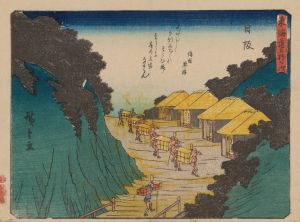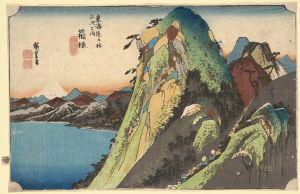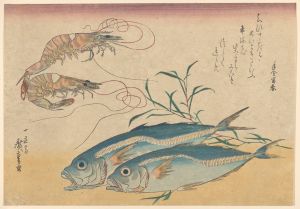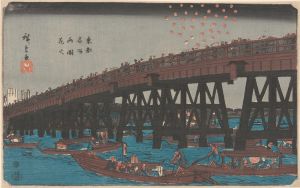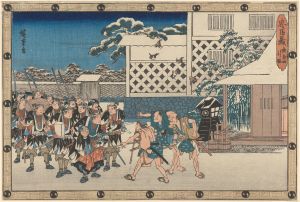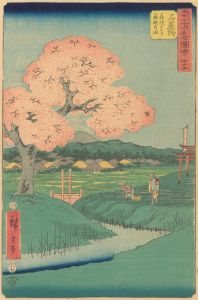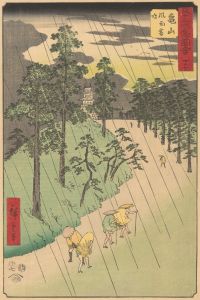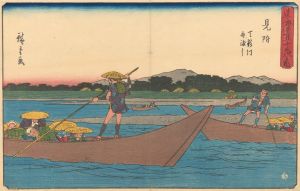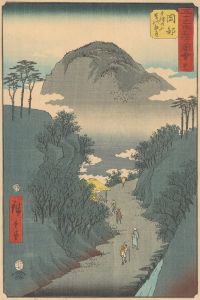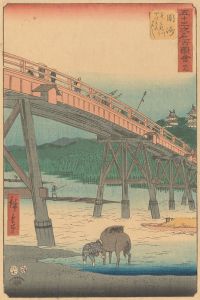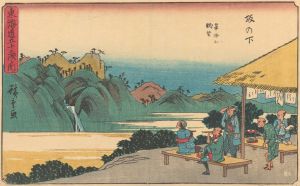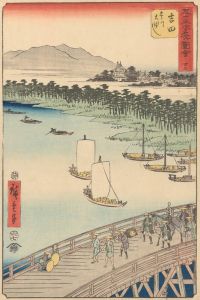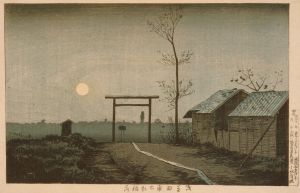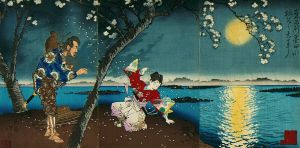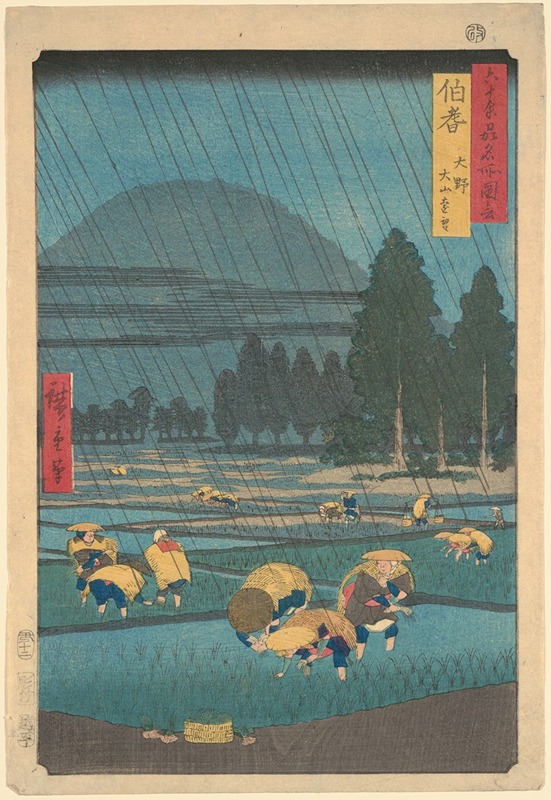
Rice Planting under Rain at Ono, Hoki Prefecture
A hand-painted replica of Andō Hiroshige’s masterpiece Rice Planting under Rain at Ono, Hoki Prefecture, meticulously crafted by professional artists to capture the true essence of the original. Each piece is created with museum-quality canvas and rare mineral pigments, carefully painted by experienced artists with delicate brushstrokes and rich, layered colors to perfectly recreate the texture of the original artwork. Unlike machine-printed reproductions, this hand-painted version brings the painting to life, infused with the artist’s emotions and skill in every stroke. Whether for personal collection or home decoration, it instantly elevates the artistic atmosphere of any space.
"Rice Planting under Rain at Ono, Hoki Prefecture" is a woodblock print by the renowned Japanese ukiyo-e artist Andō Hiroshige. This artwork is part of Hiroshige's celebrated series "Famous Views of the Sixty-odd Provinces," which was published between 1853 and 1856. Hiroshige is widely recognized for his landscape prints, which capture the beauty and essence of various regions across Japan during the Edo period.
The print depicts a rural scene in Ono, located in what was historically known as Hoki Province, now part of modern-day Tottori Prefecture. The composition illustrates farmers engaged in the labor-intensive process of rice planting, a vital agricultural activity in Japan. The scene is set under a gentle rain, which is skillfully rendered by Hiroshige using fine lines to suggest the falling rain, adding a dynamic and atmospheric quality to the piece.
Hiroshige's use of color and composition in this print is characteristic of his style, which often emphasizes harmony between human activity and nature. The subdued palette, dominated by greens and blues, reflects the lushness of the rice fields and the overcast sky, creating a serene and contemplative mood. The figures of the farmers are depicted with a sense of movement and purpose, highlighting their connection to the land and the cyclical nature of agricultural life.
The "Famous Views of the Sixty-odd Provinces" series was designed to showcase the diverse landscapes and cultural sites across Japan, and "Rice Planting under Rain at Ono, Hoki Prefecture" is a testament to Hiroshige's ability to capture the unique character of each location. This series was produced during a time when travel was becoming more accessible in Japan, and there was a growing interest in exploring and documenting the country's scenic beauty.
Hiroshige's work, including this print, played a significant role in popularizing the ukiyo-e genre both in Japan and abroad. His landscapes, in particular, influenced Western artists in the late 19th century, contributing to the Japonisme movement in Europe. Artists such as Vincent van Gogh and Claude Monet admired Hiroshige's compositions and use of color, which can be seen in their own works.
"Rice Planting under Rain at Ono, Hoki Prefecture" exemplifies Hiroshige's mastery of the woodblock printing technique, which involves multiple stages of carving and printing to achieve the final image. Each color in the print required a separate block, and the precision with which these were aligned is a testament to the skill of both Hiroshige and the artisans who collaborated with him.
Today, Hiroshige's prints are highly valued for their artistic merit and historical significance, offering insights into the landscapes and daily life of Japan during the Edo period. "Rice Planting under Rain at Ono, Hoki Prefecture" remains a celebrated example of his work, appreciated for its beauty and its ability to evoke a sense of place and time.





